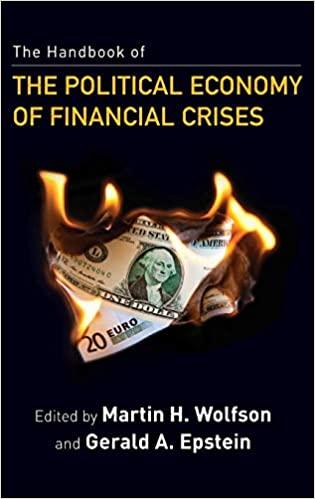Question
Problem: You work at a large, privately held consulting firm. Your boss has come to you and asked to you evaluate a potential acquisition. Specifically,
Problem: You work at a large, privately held consulting firm. Your boss has come to you and asked to you evaluate a potential acquisition. Specifically, she has told you that the leader of the targeted practice, Mr. Smith, has proposed an acquisition price of $2.0M. She wants to know if, at this price, the acquisition makes sense for your firm. You are to perform a DCF valuation of Mr. Smiths consulting practice. The required data to perform this analysis is listed below. Additional set-up information will be provided in class.
Hint: You will need to calculate an appropriate discount rate (including any size premiums, etc.), free cash flows, and a terminal value. You will then have to discount the cash flows and terminal value to a present valuation.
- Size of practice: 6 people
- Smith: Bill rate $750/hour; expected chargeability = 60%; salary = $1,250,000
- Employee 1: Bill rate $550/hr; expected chargeability = 75%; salary = $300,000
- Employee 2: Bill rate $375/hr; expected chargeability = 80%; salary = $180,000
- Employee 3: Bill rate $325/hr; expected chargeability = 80%; salary = $165,000
- Employee 4: Bill rate $295/hr; expected chargeability = 90%; salary = $125,000
- Employee 5: Bill rate $265/hr; expected chargeability = 90%; salary = $95,000
- Giveaways: $425,000 per year (income Mr. Smith generates each year, but cant do himself. He could bring this income to a larger firm. Salary necessary to earn that missed income would be = $95,000
- Mr. Smith has been in business for 20 years and has had steadily growing cash flows during this time.
- Potential workable hours in 1 year = 2,000
- Date of acquisition = January 1, 2022
- Annual office expenses = $350,000
- Risk free rate (US Treasuries)
- 3 mo = 1.69%
- 1 yr = 2.27%
- 2 yr = 2.52%
- 5 yr = 3.24%
- 10yr = 3.96%
- 20yr = 4.59%
- Expected market return
- 1 yr = 6%
- 2 yr = 6.9%
- 3 yr = 7.0%
- 4 yr = 7.3%
- 5 yr = 7.5%
- 10 yr = 8.5%
- 20 yr = 8.7%
- Public Consulting Firm Betas:
- Company 1 = .80
- Company 2 = -.04
- Company 3 = .89
- Company 4 = .87
- Company 5 = .92
- Risk premium (size premium) for solo practice =
- 0%
- 22.5%
- 100%
- Tax Rate = 21%
- Revenue growth rate = 5% per year for 5 years
- Cost growth rate = 3.5%
- Growth into perpetuity =
- -50%
- 0%
- 2%
- 10%
- There are no changes in NWC expected for Mr. Smith to continue his practice
- There is nothing to depreciate or amortize
Step by Step Solution
There are 3 Steps involved in it
Step: 1

Get Instant Access to Expert-Tailored Solutions
See step-by-step solutions with expert insights and AI powered tools for academic success
Step: 2

Step: 3

Ace Your Homework with AI
Get the answers you need in no time with our AI-driven, step-by-step assistance
Get Started


